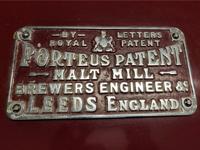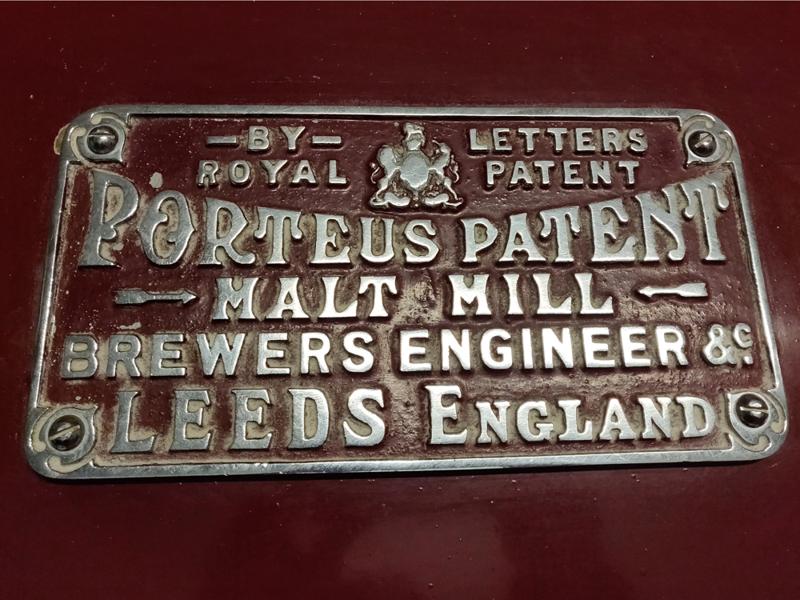TLDR
Porteus and Boby malt mills
The Porteus and Boby mills found in virtually every Scottish distillery are perhaps the most overlooked pieces of equipment in the whisky making process and perhaps the least impressive looking items on a distillery tour and yet they are engineering marvels. Unfortunately for their creators, Porteus of George Porteus and Sons of Leeds and Robert Boby Ltd of Bury St Edmunds, they proved to be so successful that both firms went out of business. When they coined the phrase 'they don't make them like that any more' these mills were almost certainly what they had in mindThe Long Read
Contents

What is a mill?
A mill is a mechaninical device for breaking down malted barley into flour, grist and husk. After malting, the malted barley, which is as crispy as well-done toast, is milled into powder known as grist. The consistency of this grist is crucial to the extraction of fermentable sugars during the next stage, mashing
What is the mill for?
The mill in a distillery is used to break or mill malted barley down to facilitate the creation of beer. In order to make whisky first you need to make beer, for that to happen the sugars created during the malting process need to be accessible to the yeast and that means the barley must be ground. Two typical types of mills exist, rolling mills and hammer mills (such as the famed Czech Hammer Head. Distilleries use their mill to convert their malted barley into a ‘grist’ of 20% husk (coarse) 70% grits/heart/middles (medium) and 10% flour (fine). The 70/20/10 mix is the standard as a greater ratio of flour would clog the mash tun, too much husk and less of the precious sugar will be available.
What’s the difference between a roller mill and a hammer mill?
A roller mill uses two sets of rollers, the first pair cracks open the malted barley grain, before the second adjustable pair, grinds down the malted barley into the finer 70/20/10 consistency desired. A hammer mill, as the name suggests, uses rapidly revolving and pivoting hammers to powder the barley against the wall of the mill creating a grist. As mentioned above the exact texture is extremely important to the process and so the mills are regularly maintained and monitored, the output is traditionally measured by hand via a ‘shoogle box’ and a millwright is brought in at least once a year to service the machine. If you ever happen to visit the Glenlivet Distillery their visitor centre features a cut away Porteus malt mill showing the internal workings.

Why is it a Porteus or Boby mill?
The mills in use throughout most, although not all, Scottish distilleries are from companies that no longer exist. Kilchoman distillery on Islay was founded back in 2005, and yet their malt mill is an old Porteus sourced from a brewery. For most distilleries however the reason these mills are still in use is that they are virtually indestructible marvels that seldom break down and they don’t need to be replaced with anywhere near the regularity of a still or washback. A fate which ultimately saw both firms pushed out of business.
Despite the incredibly popularity of both the Porteus and Boby mills their hardiness and reliability ultimately resulted in the end of the See, today companies understand that supply is directly related to demand. If there is not demand, there is no supply and then business dries up and shrivels away to nothing. Bleak as it may be, that is how these things work. Porteus unfortunately did not seem to grasp this. Their products were so good and lasted for so long that they effectually put themselves out of business. That’s right folks, they literally made products so good that not only did they get rid of the competition but they got rid of themselves. Porteus Malt Mills never broke down and never needed replaced, and since every distillery in Scotland had one, there was no more business. Unfortunately for Porteus there was nowhere left to go, and all their hard work eventually spelled the end.
References
- Georgie Crawford of Lagavulin at the Week
- Tormore malt mill at Canmore
- Pot Stills at Whisky
- Porteus at Grace’s Guide
Previous
Next

